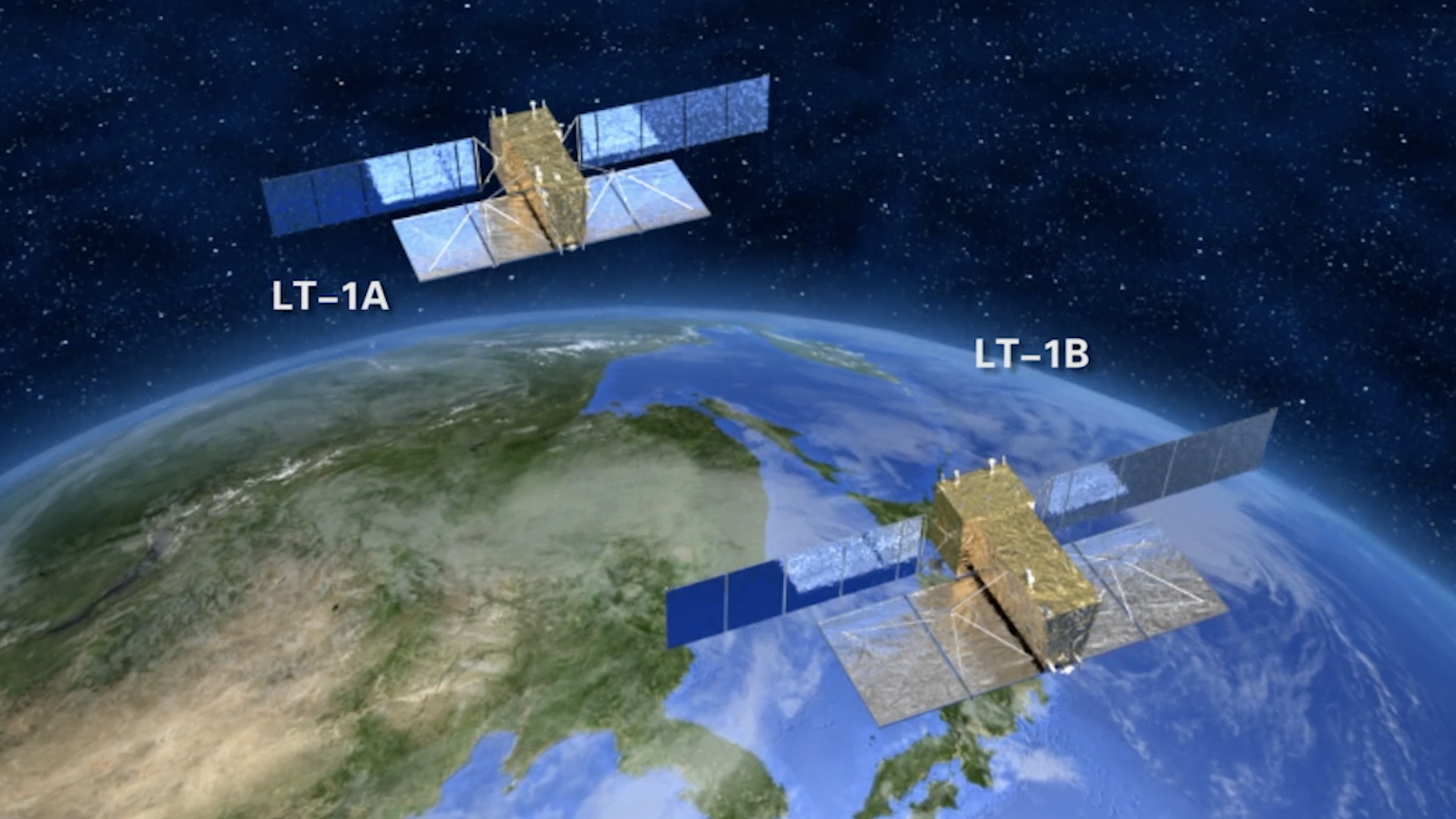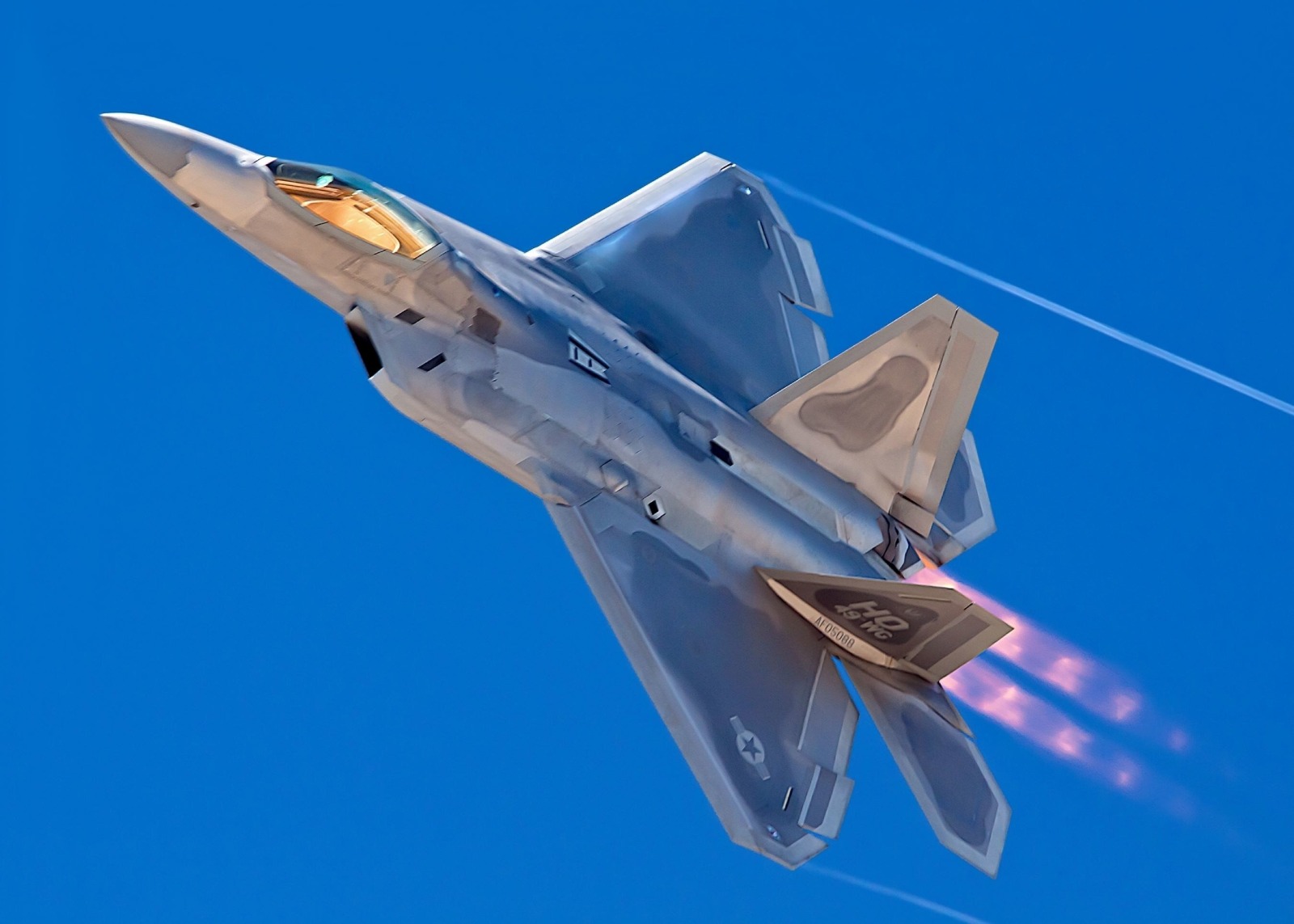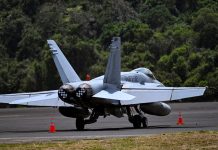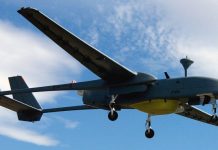China’s stealth tracking efforts appear to have hit another milestone: Chinese researchers are claiming to have developed a “revolutionary” dual-satellite radar system that could detect and track stealth aerial objects around the clock.
Stealth technology basically minimizes an aircraft’s detectability by reducing its radar cross-section (RCS), infrared signature, and acoustic emissions. China’s primary adversary, the United States, has multiple stealth aircraft that can seriously threaten the People’s Liberation Army (PLA) forces in the event of a confrontation.
As the threat of a military confrontation between China and the United States rises, Beijing has been relentlessly working to enhance its stealth detection capabilities to challenge the F-22 Raptor, the F-35 Lightning II, and the next-generation B-21 Raider, which is expected to enter service soon.
A peer-reviewed paper published in the Journal of Radars earlier this month claims that a team of Chinese researchers has finally tested a dual-satellite radar system that effectively detects aerial stealth objects.
This milestone was peer-reviewed by leading Chinese institutions, including the Shanghai Academy of Spaceflight Technology (SAST), Northwestern Polytechnical University, and Shanghai Jiao Tong University.
This could seriously challenge the dominance of platforms like the US F-22 Raptor and the next-generation B-21 bomber, according to a report by the South China Morning Post (SCMP).
The SCMP report claimed that the world is already familiar with Beijing’s capability to detect stealth aircraft using optical satellites, as demonstrated when the Jilin-1 commercial satellite tracked an F-22 fighter jet manoeuvring through clouds in 2022. It described this unusual detection as “a feat that showcased the potential of civilian satellite systems in military reconnaissance.”
However, Chinese scientists do acknowledge that optical cameras have limitations. For instance, the optical camera cannot operate at night and could be very easily obstructed by cloud cover, fog, or other adverse weather conditions.
“In real combat scenarios, military commanders place greater trust in radar satellites, which can function reliably around the clock and under all weather,” it stated, referring to a key shortcoming that could change the course of combat and result in a setback.
This is where the radar satellites come into the picture. Unlike optical satellites, they function reliably in all weather conditions and at night.
China’s Stealth Detecting Satellite
When seen from above in low Earth orbit, a stealth aircraft’s radar cross-section (RCS) seems much larger. In fact, some estimates place it as huge as a barn door.
However, this benefit is outweighed by an overpowering obstacle: background clutter. The modest trace of a moving aircraft can be readily drowned out by the loud noise created by the chaotic reflection of radar signals from mountainous or rough sea surfaces.
In 2022, China introduced the Ludi Tance No. 1 (LT-1), a revolutionary dual-satellite radar system that had never been used before. The principle behind this is simple: one satellite in a bistatic setup transmits radar pulses, and the other satellite, flying in formation, receives the echoes. This distance between the transmitter and receiver significantly lowers self-interference and improves the system’s clutter suppression capabilities, which is a crucial advancement for identifying low-observable objects.
Since then, the country has quickly increased the number of its on-orbit radar satellites, placing systems in both low-Earth orbit and high-altitude geosynchronous orbits, which enables continuous monitoring over large areas. Notably, although China has not acknowledged whether there is a military application for these radar satellites, it is typical for the country to exploit dual-use technology for its military ambitions.
The peer-reviewed study indicates that these satellites could identify stealth aircraft.
The research, which is based on extensive computer simulations, demonstrates that space-borne bi-static radar can successfully suppress sea and ground clutter under a variety of operational situations, allowing for the detection of very weak, slow-moving targets at speeds as low as 50 kilometres/hour (31 mph).
More importantly, though, it highlights that the faster-moving targets (such as fighter jets, drones, and missiles) become easier to detect due to higher Doppler shifts, or changes in the frequency of the reflected waves.
This means that China could be able to quickly detect and intercept hostile fast-moving missiles and drones, which are typically considered harder to track down.
“When the target is a small moving object, its RCS is inherently small, and given the long detection range of space-borne radar systems, the returned echo signal becomes extremely weak, severely degrading target detection performance,” the research team led by Chen Junli, chief satellite designer at the Shanghai Academy of Spaceflight Technology (SAST), wrote in the journal. “To address this challenge, the space-borne bistatic radar architecture leverages a key characteristic: under large azimuth bistatic angles, there is a high probability of significant RCS enhancement for the target.”
Additionally, it is tougher to jam these twin satellites. “The anti-interference ability can be improved because the receiver does not transmit signals,” the team added.

The EurAsian Times understands that, if true, this would significantly bolster China’s war-fighting capability and boost its chance at acing multi-domain warfare. For perspective, the US has advanced satellite jamming capabilities and is actively developing them further, as part of its electronic warfare and space domain awareness initiatives
According to the study, when viewed from above, the stealth target’s RCS of 10 square meters (108 square feet) in the simulation was realistic for some features of modern stealth platforms. Meanwhile, the radar closely matched the known technical specifications of China’s LT-1 satellites, operating in the L-band with a transmission power of 4 kilowatts.
If such an experiment is authenticated, China could gain an unprecedented combat advantage over the United States, which has a sizeable stock of stealth fighters, such as the F-22 Raptor and the F-35 Lightning II, as well as stealth bombers.
Moreover, the ability of satellites to accurately identify slow-moving, low-RCS aircraft from space could drastically change the balance of power in modern combat, changing air defense, strategic bombing, and monitoring tactics.
The study’s main goal was to determine whether space-borne bistatic synthetic aperture radar (SAR), such as the LT-1 constellation, could detect slow, low-RCS moving targets, like surveillance drones or stealth aircraft, even when they were moving at very low speeds. Moreover, it effectively suppresses background clutter, whether from land or the sea.
The authors created a semi-empirical bistatic clutter scattering coefficient model to simulate how radar signals bounce off difficult terrain, such as hills and high seas, in a bistatic radar configuration where the transmitter and receiver are separated in space.
Since the twin-satellite system has different incident and scattering angles than standard single-satellite systems, the behavior of clutter is considerably more complicated.
The study states that the existing Gamma and Morchin could not capture some critical details in bistatic geometry. However, the new model incorporates single-to-bistatic conversion principles, electromagnetic scattering theory, and—most importantly—a two-scale surface scattering model, or TSM, which takes into consideration both small-scale surface roughness, like that found in sea waves, and large-scale terrain undulations.
The authors state that several sets of real-world bistatic clutter measurements from earlier experiments were used to validate the model. And, this enhanced accuracy was confirmed by the significantly reduced average error when compared to traditional models.
The simulation setup closely matched the specifications of the LT-1 satellite. In fact, nine distinct bistatic angles between 10 and 170 degrees were produced by simulating the receiving satellite in different orbital configurations. According to the study, the ideal range for bistatic angles was between 30 and 130 degrees. It highlighted that the mainlobe clutter energy was minimized in this range even at harsh 5th-level sea conditions.
The study demonstrates theoretically that the LT-1-like constellation architecture with two coordinated satellites can overcome fundamental limitations of clutter that have long protected stealth platforms.

China’s Ongoing Efforts At Stealth Tracking
Chinese researchers and engineers have been making concerted attempts at developing technology that can successfully track US Air Force (USAF) stealth fighters. In September 2024, a Chinese scientist and his team demonstrated that Beijing could successfully detect a stealth aircraft using Elon Musk’s Starlink satellites.
As part of this experiment, the group launched a DJI Phantom 4 Pro drone off the coast of Guangdong. The drone was roughly the size of a bird and had a radar cross-section similar to a stealth fighter.
Despite its stealth characteristics, the target unexpectedly appeared on the screen even though the ground-based radar did not emit any radio waves that would have resulted in an echo. The scientists explained that this was possible because the drone was illuminated by electromagnetic radiation from a Starlink satellite.
Another set of reports from last year suggested Chinese engineers had built a small infrared search-and-track system that could detect the heat signature of a high-speed mobile aircraft at an unusually long range. As noted by EurAsian Times, infrared search-and-track (IRST) systems play a crucial role in identifying stealth aircraft.
Reports published in October last year indicate that Chinese researchers have developed a new radar technology to track and identify the F-22 Raptor.
This innovation reportedly leverages signals from China’s BeiDou navigation satellite system. The novel radar technique, which just requires a basic receiving antenna, is characterized as an affordable solution that could facilitate its deployment in various locations.
Moreover, this technology does not transmit signals like conventional radars, which greatly reduces the possibility of revealing its location—a crucial advantage during military operations.
More recently, in May 2025, China unveiled a radar capable of detecting stealth objects at the World Radio Detection and Ranging Expo in Hefei, East China’s Anhui Province.
Manufactured by state-owned China Electronics Technology Group Corp (CETC), the JY-27V radar system is mounted on a military truck. This next-generation meter-wave anti-stealth radar incorporates three advanced technologies: a low-frequency band, a high-power aperture, and sophisticated intelligent algorithms. This enables the radar system to precisely detect stealth targets and guide an air defense system for a precision strike.
In 2020, China claimed to have developed a meter-wave anti-stealth radar that could detect advanced stealth. “Meter wave radar can be deployed on vehicles, on land and warships, creating a dense web that gives hostile stealth aircraft nowhere to hide,” Chinese military experts said at the time.
None of these claims could be independently verified. In fact, the military experts and critics that EurAsian Times spoke with have often expressed their suspicions about China’s overly ambitious and theoretical claims.
- Contact the author at sakshi.tiwari13 (at) outlook.com
- Follow EurAsian Times on Google News




